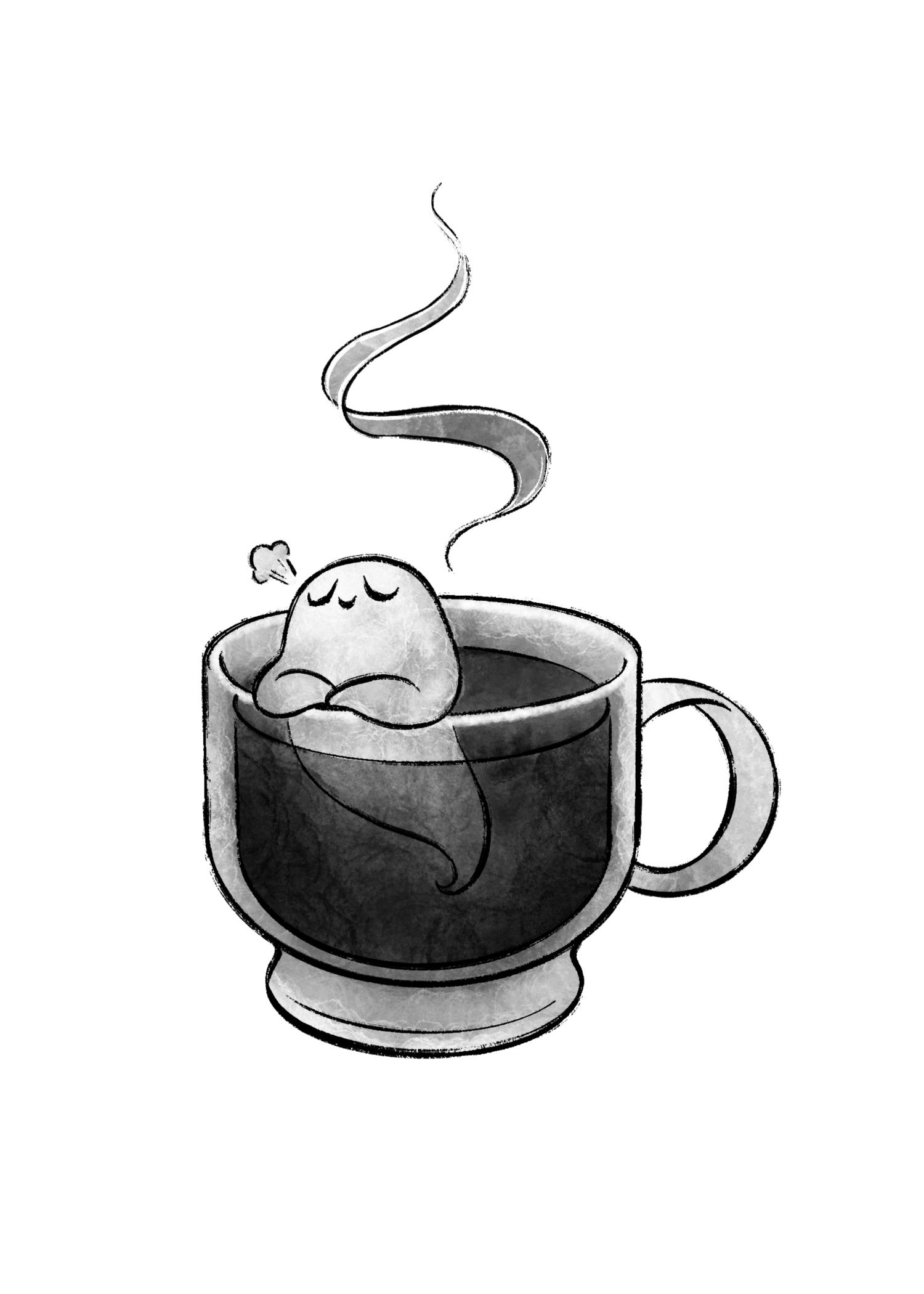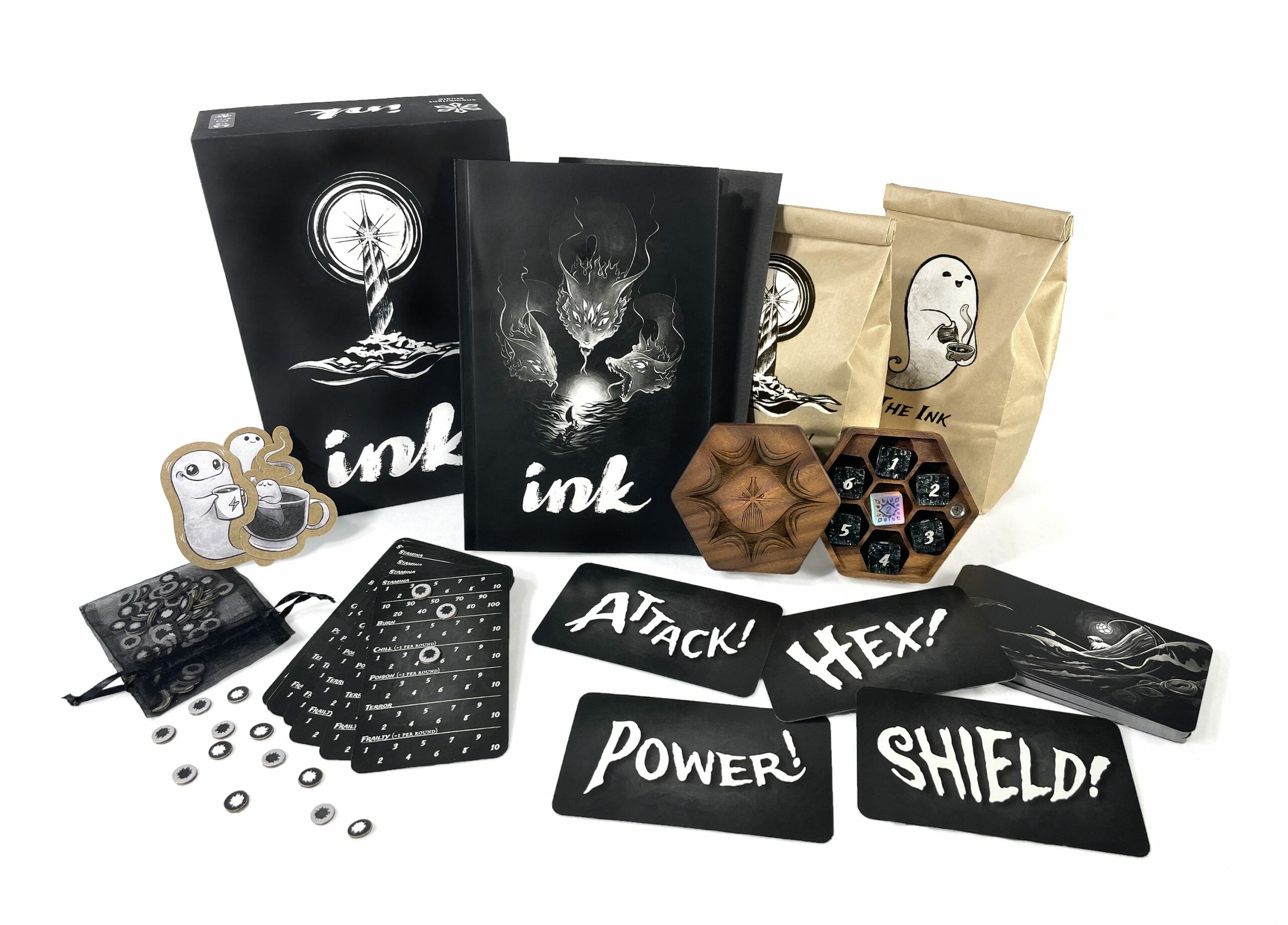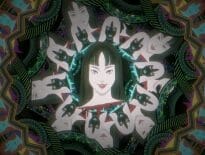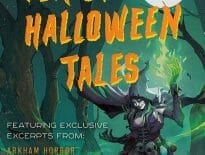ink is an indie RPG crowdfunding on BackerKit’s new platform that asks the question, “What happens to PCs when they die?”.
Snowbright Studio has hit the funding target for ink and attracted pledges from over 230 gamers, and this is good news for Geek Native. I took the chance to ask the team there to dive even deeper into the thorny subject of character death.
I think it’s a thorny topic because character death can make or break any tabletop adventure, as can the lack of it. What’s the most troublesome of all? The TPK is a total party kill when all the would-be protagonists die.
Grace, Carrie and Quill explore learning to love the TPK.
Grace (Game Writer): Video games learned a long time ago that death in a game should be fun, not frustrating. The recent boom in roguelikes and rogue-lites in video games shows that there can be some really interesting and meaningful gameplay options when you embrace death.
Carrie (Communications Manager): Death in TTRPGs can be a sticky topic though. We’re all used to dying in video games, but you have players out there that have never lost a character in a tabletop RPG before. GMs also feel the pinch since they’re the ones that have to balance encounters. Will the boss they just set up be just right or will they accidentally wipe out the whole party and prematurely end the campaign? On either side of the table, it can be an emotional situation. With ink, we wanted to flip that. What if death wasn’t the end… but a beginning?

Grace: I think that’s the key thing. When players lose characters or beloved NPCs in D&D or other TTRPGs, it hurts. Usually, their story is over. That’s it. Finito.
Carrie: Their PC’s story is over and then they also have to go roll up a new unrelated character. Rejoin the party as that new person without any of the gains they had made with the old character. Or do some questionable wizardry to get things going again. It’s a hassle!
But also, a character’s death can be a very emotional experience for the party. This is someone that the party has come to know and rely on. The personality dynamics change when someone new joins up. The party configuration can change. It’s often not a fun experience.
Grace: So in ink we tried to get rid of all that messiness. When the whole party dies, you respawn as a group at the last Beacon that you’ve been able to activate. Not only that, but this rebirth allows you to make improvements to yourself. You’re basically leveling. And that makes sense – to me at least – that after you’ve failed at something that’s when you grow.
As a GM, I love that I can throw the most wicked boss that I can at players in ink and have them get completely stomped. It shows that the boss monster is legit, and it forces the players to regroup. Tune their characters. Rethink their strategies. They don’t go in expecting everything to be OK. They need to experiment and plan. Those are great moments in any game. Plus, they’re excited to level.
Carrie: Some people might be surprised to see a game like ink come from Snowbright because what you just described is very not cozy. ink looks and feels a lot different from our heartwarming, nonviolent, cozy mystery tabletop RPG Teatime Adventures that came out last year. But they’re both about growth and about finding yourself. In one you do that in the garden while sipping tea and in the other you do that while battling sea ghouls that are trying to board your ship as you sail along a dark ocean in the afterlife.

Quill (Creative Director): Snowbright’s art is typically bold and bright with saturated colors. ink is different from our other games in tone and subject. The art for ink reflects that departure. Death and the afterlife can be grim subjects, so we opted for grayscale art to reflect that tone. That being said, the world of ink is not devoid of joy or levity. Soft, friendly booristas run peaceful elixir shops, and many of the fiends that players may encounter can be cute or silly, like the adorable inferno foxes. Soft touches like those give ink its distinct Snowbright vibe.
Grace: As I see it, death mechanics are one of the least explored areas in tabletop RPGs. It’s just this big black hole that says GAME OVER. I hope that ink can give players and GMs alike the chance to explore that more and develop new types of play and new systems around these ideas. Regardless of if you’re there for strategic Greater Fiend battles or just there to hang with Quill’s boorista buddies, ink should have something fun for everyone. And hopefully we can make TPKs in TTRPGs a little more fun.
Quick Links
Find out what Geek Native readers say about this in the comments below. You're welcome to add your own.

